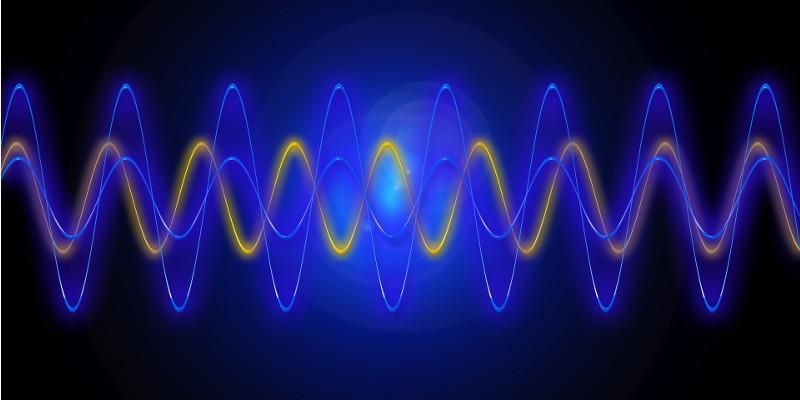
Lasers are widely used as high power sources of light operating at a specific frequency. But how does this frequency get selected when a laser is turned on, and how quickly?
Pioneering engineers using terahertz frequency technology have been able to investigate this process for the first time. Their results will underpin the future development of semiconductor lasers, including those used in public and private sector-owned telecommunications systems.
For many years, it has been predicted that operating frequencies within semiconductor lasers stabilise on a timescale of a few nanoseconds (ie a few billionths of a second) and can be changed within a few hundreds of picoseconds (ie thousandths of a nanosecond).
Until now though, no detector has been capable of measuring and proving this precisely, and the best results have only been achieved on nanosecond timescales, which are too slow to allow really efficient analysis or to be used to develop the most effective new systems.
International collaboration
University of Leeds researchers at the Bragg Centre for Materials Research worked with international colleagues at École Normal Supérieure in Paris and the University of Queensland in Brisbane, have now used terahertz frequency quantum cascade lasers and a technique called terahertz time-domain spectroscopy to understand this laser stabilisation process.
The terahertz-powered technology can measure the wavelength of light in periods of femtoseconds (ie millionths of a nanosecond) giving unprecedented levels of detail. By knowing the speed at which wavelengths change within lasers, and what happens during that process within miniscule time frames, more efficient devices and systems can be built. The group’s research is published in Nature Communications.
“Our research is aimed at showing engineers and developers where to look to drive increased performance in their own systems.”
Benefits for industry
Dr Iman Kundu, from the School of Electronic and Electrical Engineering, is principal author of the paper explaining the research. He said: “We’ve exploited the ultrafast detection capabilities of terahertz technology to watch laser emissions evolve from multiple colours to a single wavelength over less than a billionth of a second.
“Now that we can see the detailed emission of the lasers over such incredibly small time frames, we can see how the wavelength of light changes as one moves from one steady state to a new steady state.
“The benefits for commercial systems designers are potentially significant. Terahertz technology isn’t available to many sectors, but we believe its value lies in being able to highlight trends and explain the detailed operation of integrated photonic devices, which are used in complex imaging systems which might be found in the pharmaceutical or electronics sectors.
“Designers can then apply these findings to lasers operating at different parts of the electromagnetic spectrum, as the underlying physics will be very similar.”
Professor Edmund Linfield, Chair of Terahertz Electronics at the University of Leeds, who was also involved in the study, said: “We’re using the highly advanced capabilities of terahertz technology to shine a light on the operation of lasers.
“Our research is aimed at showing engineers and developers where to look to drive increased performance in their own systems. By doing this, we will increase the global competitiveness of the UK’s science and engineering base.”
The research was supported by the Engineering and Physical Sciences Research Council (HyperTerahertz programme grant), part of UKRI; the Royal Society, the Wolfson Foundation; the European Union’s ULTRAQCL grant and the Centre National de la Recherche Scientifique, France.
Further information
Iman Kundu and Edmund Linfield are available for interview; contact Peter Le Riche in the University of Leeds press office on +44(0)113 343 2049 or email p.leriche@leeds.ac.uk